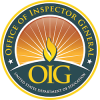FSA consistently administered its heightened cash monitoring payment methods for schools that FSA placed on heightened cash monitoring for the top five reasons, and the documentation generally supported FSA’s placement of the schools on heightened cash monitoring. In our review of supporting documentation for 43 of the 809 schools on a heightened cash monitoring payment method for the top five reasons, we generally found that (1) the reason for a school’s placement was consistent with applicable regulations and FSA’s “Method of Payment Procedures” and (2) the documentation consistently supported the level of heightened cash monitoring.However, FSA did not have adequate internal controls to reasonably ensure it consistently placed schools on a heightened cash monitoring payment status when they submitted late annual financial statements or had composite scores that fell below the minimum financial responsibility score. As a result, School Participation Divisions (School Divisions) did not consistently or timely cite and place schools on provisional and heightened cash monitoring for submitting financial statements after the due dates.Also, FSA did not have control activities to track a school’s method of payment status from the School Division’s recommendation for heightened cash monitoring placement until the placement was made. We determined that 99 percent of the schools (653 of 659) with composite scores below the minimum financial responsibility score either were properly placed on stop payment or required by FSA to participate under alternative standards and requirements. However, one of FSA’s eight School Divisions did not take the required actions for 6 (5 percent) of 113 schools with composite scores that fell below the minimum score for financial responsibility. Further, FSA did not retain all required documentation for administering its heightened cash monitoring payment methods for some of the 43 schools we sampled. While the documentation generally supported FSA’s placement of schools on heightened cash monitoring, we found that FSA did not retain all required documentation for 9 schools (21 percent). For the 25 schools we sampled, FSA did not retain at least one required document for 12 schools (48 percent) removed from a heightened cash monitoring payment method.Overall, FSA’s use of heightened cash monitoring was an effective oversight tool. Our review of FSA’s “Method of Payment Procedures” found that the processes, as designed, provided reasonable assurance that a school (1) placed on a heightened cash monitoring payment method implemented the required corrective actions before FSA returned the school to the advance payment method and (2) placed on heightened cash monitoring 2 submitted the required student payment documentation to FSA before being reimbursed by the Department.
Report File
Date Issued
Submitting OIG
Department of Education OIG
Other Participating OIGs
Department of Education OIG
Agencies Reviewed/Investigated
Department of Education
Components
Federal Student Aid
Report Number
A03Q0006
Report Description
Report Type
Audit
Agency Wide
Yes
Number of Recommendations
3
Questioned Costs
$0
Funds for Better Use
$0
Additional Details


